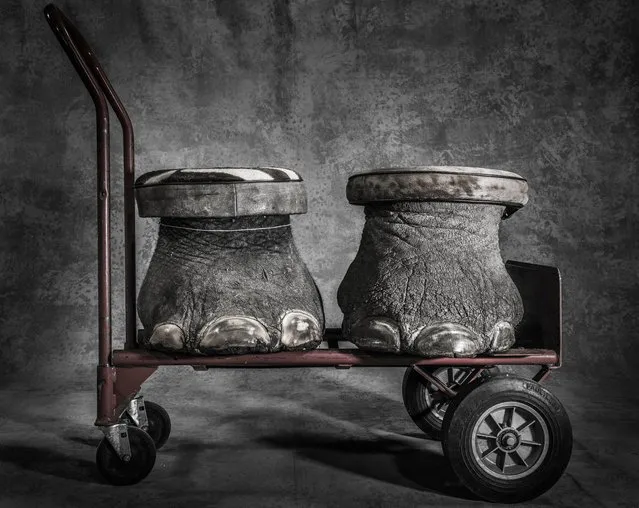
The fourth annual BigPicture Natural World Photography Competition aims to celebrate the diversity of life on Earth, and encourages people to protect and conserve it. Here: “Confiscated”. Grand Prize Winner. These elephant feet-turned-footstools are among some 1.3 million confiscated wildlife products housed in a U.S. Fish and Wildlife repository near Denver, Colorado. (Photo by Britta Jaschinski/BigPicture Natural World Photography Competition 2017)
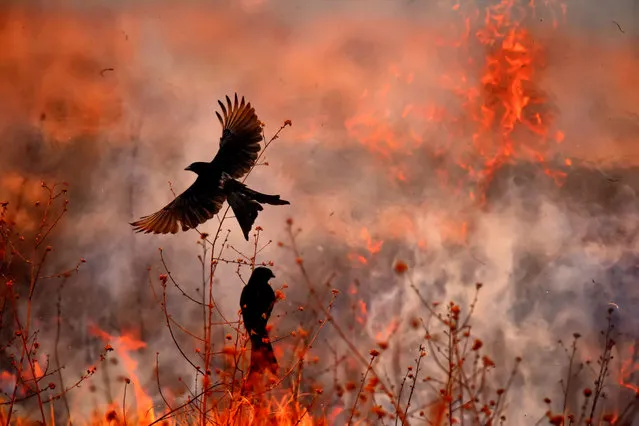
“Feather in the Flames”. Winged Life Finalist. Farmers in Singur, West Bengal, India, burn off the stubble left after harvest, and black drongos swoop to eat the insects fleeing the flames. (Photo by Kallol Mukherjee/BigPicture Natural World Photography Competition 2017)
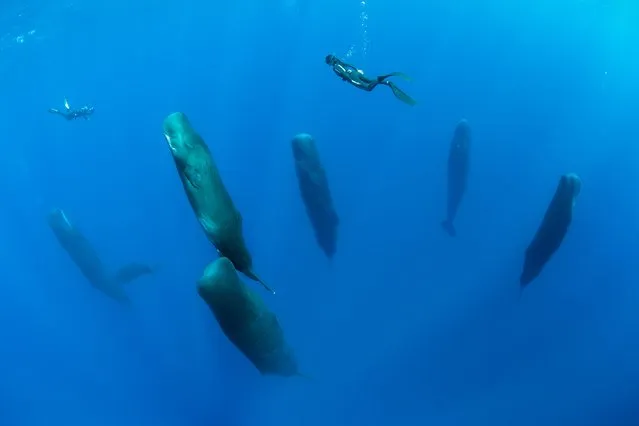
“Synchronized Sleepers”. Human/Nature Finalist. Franco Banfi and his fellow divers were following this pod of sperm whales in the Caribbean Sea off the Commonwealth of Dominica, when they suddenly seemed to fall into a vertical slumber. First observed in 2008, scientists have found that these massive marine animals spend about 7 per cent of their time alseep. (Photo by Franco Banfi/BigPicture Natural World Photography Competition 2017)
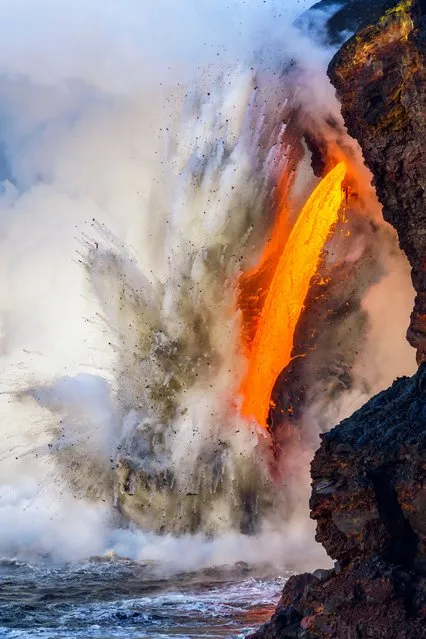
“Kamokuna Lava Firehose 25”. Landscapes, Waterscapes, and Flora Winner. During a week in January, a steady stream of lava, called a firehose, suddenly gushed from an underground lava tube at the base of Hawai’i’s Kilauea volcano and spilled into the Pacific Ocean. As the molten rock met the cooler seawater, steam, sand, and chunks of cooled lava were thrown explosively into the air. (Photo by Jon Cornforth/BigPicture Natural World Photography Competition 2017)
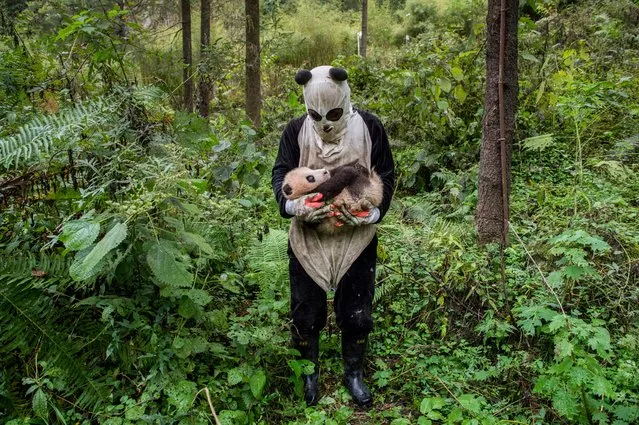
“Pandas Gone Wild”. Human/Nature Winner. At the Hetaoping Research and Conservation Center in China’s Wolong Reserve, captive-bred giant pandas have been raised with the hope of one day reintroducing them to the wild. To prevent young pandas from imprinting on and becoming attached to their human caregivers, the center’s staff wear costumes that mimic the animals’ characteristic black and white pattern. (Photo by Ami Vitale/BigPicture Natural World Photography Competition 2017)
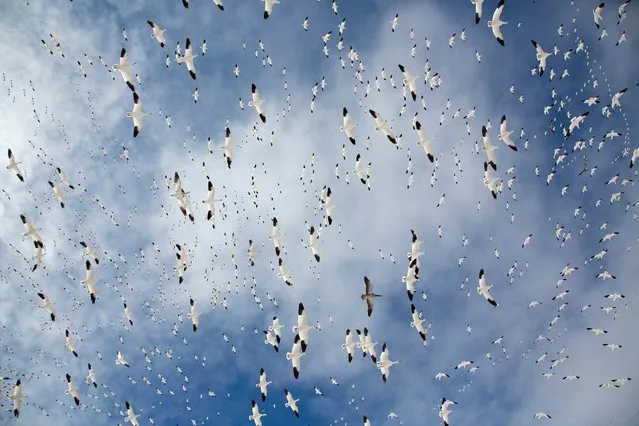
“Snow Globe”. Winged Life Winner. Bosque del Apache National Wildlife Refuge in New Mexico is home to a huge population of snow geese, in part because of the sprawling fields of grain that have cropped up along their migration route over the past 60 years. Descending in vast flocks, the geese leave a wake of mowed-down plants and exposed ground that can take decades to recover. (Photo by Denise Ippolito/BigPicture Natural World Photography Competition 2017)
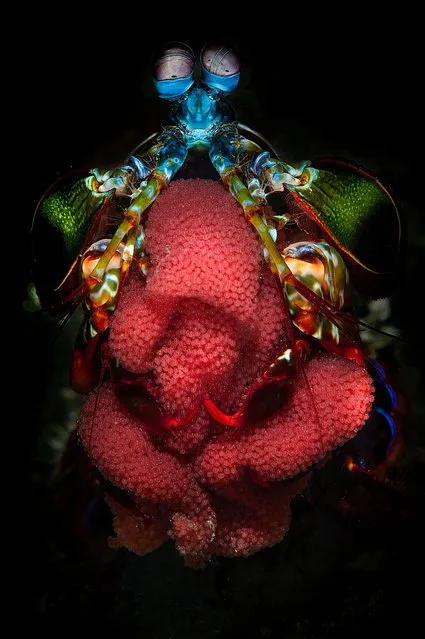
“Mantis Mom”. Aquatic Life Winner. Surrounded by black volcanic sands, a peacock mantis shrimp stands guard over her ribbon-like mass of fertilized eggs in the Lembeh Strait, Indonesia. (Photo by Filippo Borghi/BigPicture Natural World Photography Competition 2017)
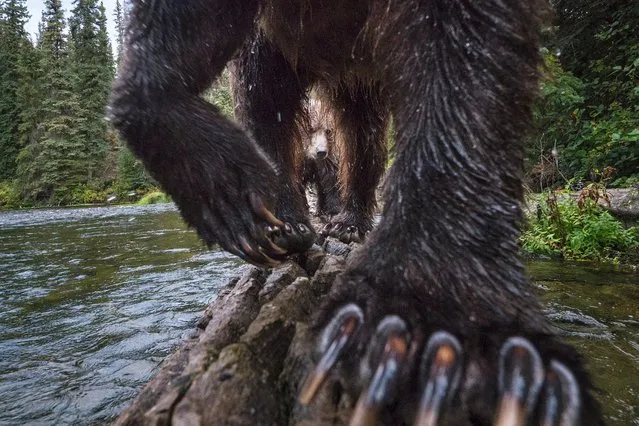
“The Salmon Catchers”. Terrestrial Wildlife. To capture this view of a mother grizzly bear and her cub, photographer Peter Mather set up a camera trap on a log that he knew the bears tended to traverse while fishing for salmon, in the Yukon River watershed in Canada. (Photo by Peter Mather/BigPicture Natural World Photography Competition 2017)
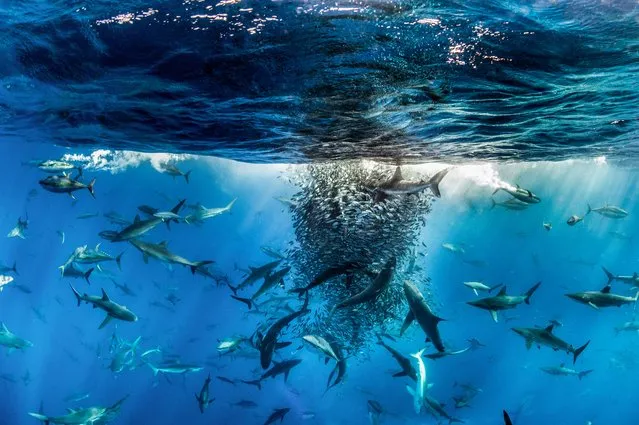
“Roundup at Revillagigedo”. Aquatic Life Finalist. The nutrient and plankton rich waters of the Revillagigedo Archipelago, Mexico, create an unusually healthy ecosystem. Here over 1,000 top predators, including a variety of sharks and yellowfin tuna, gather to eat. (Photo by Ralph Pace/BigPicture Natural World Photography Competition 2017)
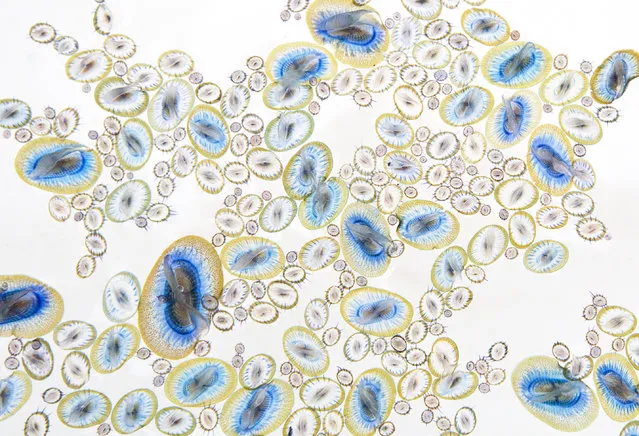
“Sea Jewels”. Art of Nature Winner. Dozens of by-the-wind sailors, measuring up to three inches long, viewed in a bucket of water at the Monteray Bay National Marine Sanctuary, California. (Photo by Jodi Frediani/BigPicture Natural World Photography Competition 2017)
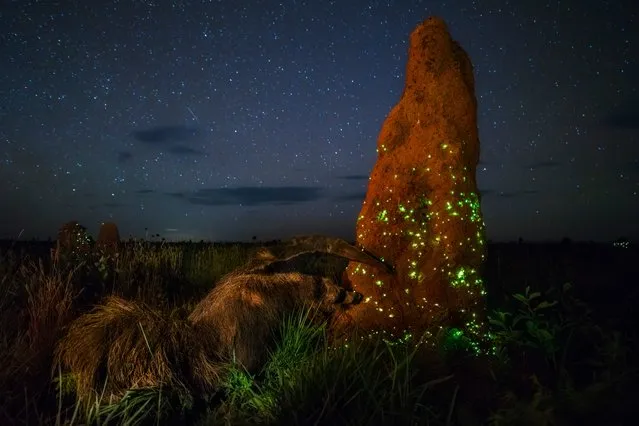
“Ecosystem”. Terrestrial Wildlife Winner. A termite mound in Emas National Park, Brazil, glows with the light produced by the larvae of click beetles. (Photo by Marcio Cabral/BigPicture Natural World Photography Competition 2017)
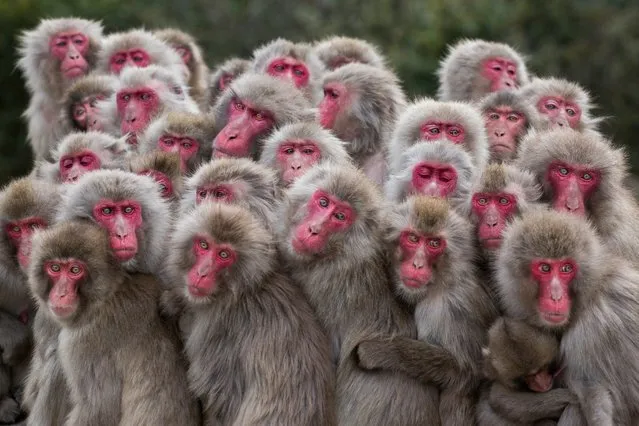
“The More the Merrier”. Terrestrial Wildlife Finalist. Macaque monkeys huddle together on Shōdoshima Island, Japan, pooling body heat as temperatures drop. (Photo by Alexandre Bonnefoy/BigPicture Natural World Photography Competition 2017)
02 Jul 2017 07:25:00,
post received
0 comments
